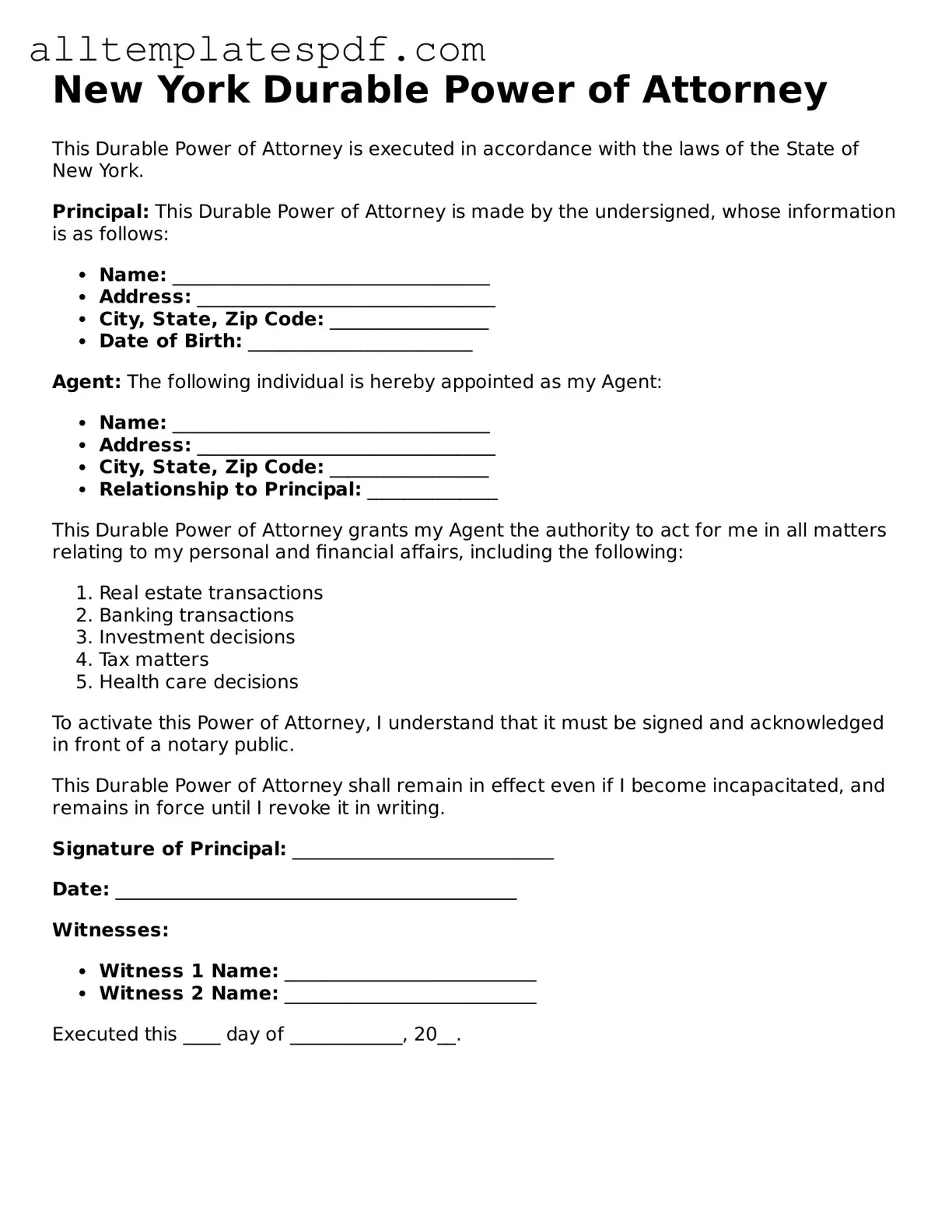Filling out a Durable Power of Attorney form in New York can be a straightforward process, but mistakes often occur. One common error is not using the most current version of the form. Laws change, and using an outdated document can lead to complications. Always check for the latest version to ensure compliance with current regulations.
Another frequent mistake is failing to clearly identify the agent. The agent is the person who will act on your behalf, so it’s crucial to provide their full name and address. Omitting this information can create confusion and may render the document ineffective.
People often overlook the importance of specifying the powers granted to the agent. The form allows you to choose specific powers or grant general authority. Not detailing these powers can lead to misunderstandings about what the agent can and cannot do.
Additionally, many individuals forget to sign and date the form properly. A signature is essential for the document to be valid. Without a date, it can be difficult to determine when the powers take effect, which may lead to disputes later.
Witness requirements are another area where mistakes occur. In New York, the form must be signed in the presence of a witness. Failing to have a witness present during the signing can invalidate the document. Ensure that the witness is an adult and not the agent or a family member.
People also often neglect to have the form notarized. While notarization is not always required, it can provide additional validation and help avoid potential challenges. Having a notary public witness the signing adds an extra layer of security.
Another common mistake is not keeping copies of the completed form. After filling out the Durable Power of Attorney, it’s important to make copies for both the agent and yourself. This ensures that everyone involved has access to the document when needed.
Some individuals fail to review the form after completion. It’s essential to double-check all information for accuracy. Mistakes in names, addresses, or powers can lead to significant issues down the line.
People may also forget to inform their agent about the Durable Power of Attorney. It’s crucial to discuss your wishes and the powers you are granting. This conversation can help ensure that your agent is prepared to act on your behalf when necessary.
Lastly, many people do not update their Durable Power of Attorney as their circumstances change. Life events such as marriage, divorce, or the death of an agent can necessitate changes to the document. Regularly reviewing and updating the form ensures that it reflects your current wishes and situation.
